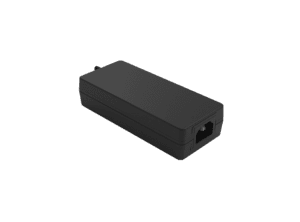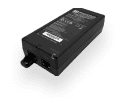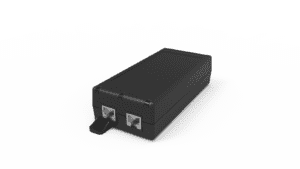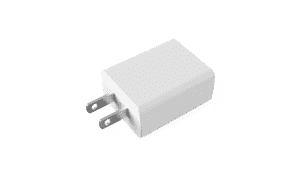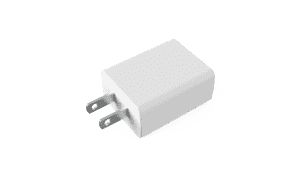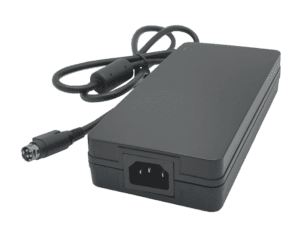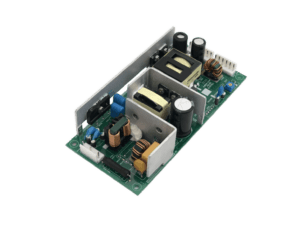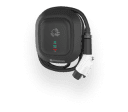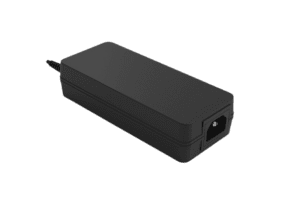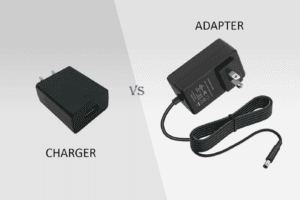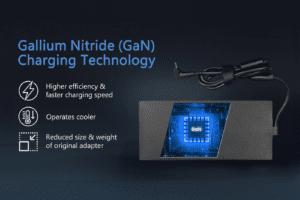BLOG
UL 3100 & UL 2593 Compliance: What New Safety Standards Mean for Robotic Charging Station Manufacturers
Table of contents
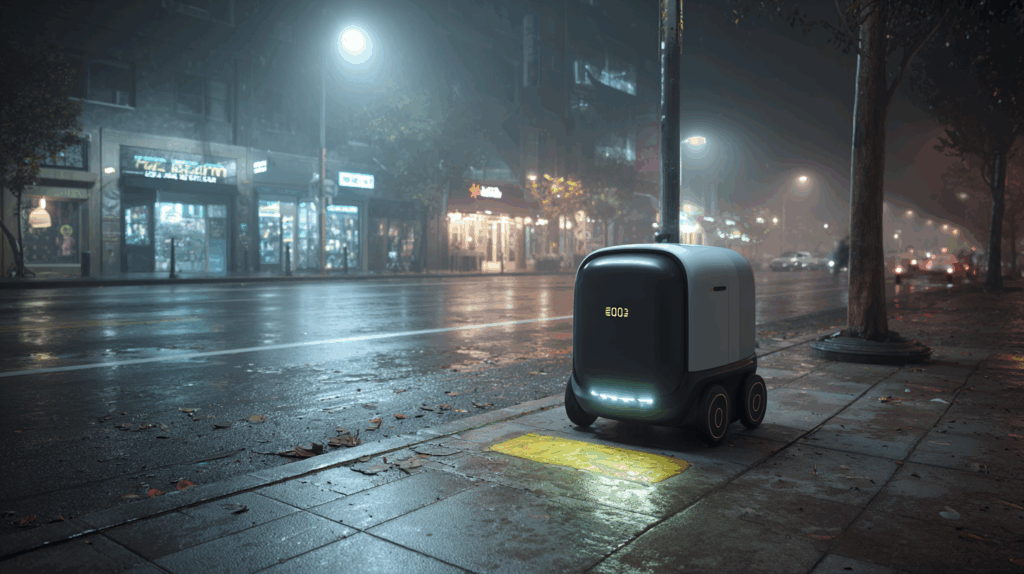
As autonomous robots move beyond controlled industrial settings into public-facing environments—delivering packages, scrubbing floors, or patrolling campuses—safety becomes paramount. For manufacturers building robotic charging stations, this shift brings increasing scrutiny from regulators, city planners, and enterprise clients alike.
Two critical safety standards have emerged as essential benchmarks: UL 2593 and UL 3100. These UL certifications define safety requirements for battery charging systems and electrical equipment used with service and personal care robots. Whether you’re building docks for last-mile delivery bots, autonomous cleaning machines, or indoor AMRs, understanding and complying with these standards is no longer optional—it’s essential for growth, credibility, and public safety.
In this article, we’ll explain what UL 2593 and UL 3100 mean, how they differ, and what robotic charging station manufacturers must do to design, certify, and scale safely.
What Is UL 2593 and Why Does It Matter?
UL 2593 is a safety standard for battery-operated appliances, especially those that charge unattended. Originally developed for floor cleaning machines, it’s now widely used across service robot applications, including robotic vacuum systems, scrubbers, and charging docks.
Top Features
- Covers battery chargers, docking stations, and onboard charging components
- Specifies protection against fire, electric shock, overheating, and fault conditions
- Requires automatic shutoff, overcharge prevention, and leakage current limits
- Includes enclosure and wiring safety, including spacing, grounding, and insulation
Top Benefits
- Enables certification for autonomous cleaning and service robots used in commercial facilities
- Enhances trust with facility managers, procurement teams, and insurers
- Reduces liability from charging failures, thermal events, or power-related damage
- Accelerates time-to-market by pre-qualifying for institutional or municipal adoption
Best Practices
- Use flame-retardant housing (UL 94 V-0) and UL-listed wiring
- Design for touch-proof charging interfaces in public-facing deployments
- Integrate temperature sensors, redundant fault detection, and automatic disconnects
- Submit full dock systems—not just internal power modules—for UL testing
UL 2593 isn’t just a battery standard—it’s a foundation for robotic safety infrastructure.
What Is UL 3100 and How Does It Apply to Robot Charging?
UL 3100 is a newer safety standard introduced by Underwriters Laboratories for automated electrical equipment for use by the general public, especially personal care and service robots.
It expands UL compliance to broader robotic applications and focuses on interaction with humans, making it critical for indoor delivery bots, hospital aides, and commercial AMRs.
Top Features
- Applies to robotic products and accessories used near people—indoors or in public
- Addresses electrical, thermal, mechanical, and software-related hazards
- Requires protection for human-machine interaction, including overcurrent, ground fault, and emergency disconnects
- Covers integrated charging stations and docking mechanisms used by robots
Top Benefits
- Helps robotic OEMs and dock manufacturers gain access to sensitive or high-regulation environments
- Enhances product safety profiles for deployments in hospitals, schools, malls, and airports
- Prepares systems for future regulatory mandates in smart cities and commercial real estate
- Builds consumer confidence in autonomous technologies
Best Practices
- Design docks with safe charging logic, enclosure ventilation, and circuit isolation
- Include protective measures like emergency stop, auto-disconnect, or soft interlocks
- Ensure the dock’s firmware safely handles errors and cannot cause unexpected behavior
- Document fault handling and recovery logic in all embedded software
UL 3100 reflects the growing expectation that robotic systems must be safe in human environments—24/7.
Key Differences Between UL 2593 and UL 3100 for Manufacturers
While there’s overlap, UL 2593 and UL 3100 apply to different contexts—and manufacturers may need one or both depending on application.
Top Features
- UL 2593: Focuses on battery charging safety and energy delivery hardware
- UL 3100: Covers complete robotic systems, especially those used by or near the general public
- Both require rigorous testing of thermal, electrical, and mechanical safety systems
- Both apply to robotic docking stations, especially when used in commercial or urban deployments
Top Benefits
- UL 2593 helps validate power safety, grounding, and battery management
- UL 3100 assures public safety and interaction logic, even for multi-functional robots
- Together, they create a complete safety profile for robot + dock + system software
- Enable faster procurement, pilot approval, and enterprise-scale deployment
Best Practices
- Review product use cases and determine which standard (or both) apply
- Submit whole system (robot + dock + software) for UL 3100, not just individual components
- Label all UL-compliant components clearly to support client documentation
- Work with UL early in the design process to prevent costly revisions
Understanding which standard governs your deployment use case is crucial to building certified, deployable, and scalable systems.
CLIENT'S QUOTE
"Phihong’s PoE solutions have made a huge difference for us! Our network runs more efficiently, and we’ve seen real cost savings. We couldn’t be happier!"
How UL Compliance Affects Design, Engineering, and Scaling
UL compliance influences everything from component selection to enclosure design and firmware logic. It’s not a post-production step—it’s baked into engineering.
Top Features
- Component certification (UL-listed fuses, connectors, relays, power modules)
- Thermal design for continuous operation and shutdown at safe thresholds
- Isolation barriers between high-voltage and low-voltage logic
- Functional testing for startup, shutdown, and fault recovery
Top Benefits
- Prevents expensive redesigns late in development
- Enhances product reputation and quality perception
- Reduces regulatory delays and certification backlogs
- Supports global distribution through safety harmonization (e.g., CE, IEC, CB Scheme)
Best Practices
- Use conformal coatings or potting to protect PCBs in wet/humid conditions
- Create separate logic and power planes for safety isolation
- Design PCBs with correct spacing and creepage distances
- Simulate failure conditions and document system responses
UL compliance isn’t just about hardware—it’s about creating a safe system under all operating conditions.
How Phihong USA Supports UL 2593 and UL 3100 Compliance
Phihong USA specializes in UL-compliant power solutions and robotic charging infrastructure for OEMs and system integrators.
We provide:
- UL 2593-certified AC-DC and DC-DC power modules for service and delivery robots
- Enclosures, connectors, and components built to support UL 3100 standards
- Firmware integration for BMS safety handshakes and auto-disconnect features
- Guidance for thermal design, enclosure sealing, and documentation prep
- Engineering support for system-wide compliance, not just individual components
Whether you’re building a floor-cleaning robot, indoor delivery system, or an outdoor security bot, Phihong provides the power infrastructure and compliance readiness you need to scale with confidence.

Contact Our Team Today!
Our dedicated sales team and international partners are prepared to support you with your latest projects and initiatives globally.
Explore More with Phihong USA
As we conclude our exploration of PoE technology, it’s evident how these innovations are streamlining power and data integration across various industries. Phihong USA stands at the forefront of this technological advancement, offering a diverse range of power solutions designed to meet the evolving needs of modern industries.
Phihong USA’s extensive product lineup includes:
- Power over Ethernet (PoE) Solutions: Delivering reliable power and data transmission over a single cable, ideal for simplifying network installations and reducing costs.
- AC/DC Adapters and Power Supplies: From compact adapters to industrial-grade power supplies, Phihong provides solutions that ensure efficiency and reliability in various applications.
- Battery Chargers: Customizable chargers for lithium-ion and lead-acid batteries, supporting a wide range of power requirements for mobility and industrial applications.
- Medical Power Supplies: Specialized power solutions designed to meet the stringent requirements of the healthcare industry, ensuring safety and reliability.
Phihong USA is committed to innovation and excellence, continually developing products that meet the highest standards of performance and reliability. Their global reach and dedication to customer support make them a trusted partner in powering the future.
Here are some useful links to explore Phihong USA’s offerings further and bring in new potential clients:
Visit Phihong USA to discover how their advanced power solutions can support your business needs. Whether you’re looking to upgrade your network, or find reliable power supplies, Phihong USA has you covered.
By choosing Phihong USA, you’re partnering with a leader in power technology, ensuring your operations run smoothly and efficiently with top-tier power solutions. Contact Us today!
FAQ
What is UL 2593, and why is it important for robotic charging docks?
UL 2593 is a safety standard for battery-operated appliances and their charging systems, covering risk scenarios like overcharge, short-circuit, overheating, and electric shock. For robotic charging docks—especially those used for cleaning robots, delivery bots, or unattended service units—this standard ensures safe operation in both commercial and public environments. Compliance helps gain acceptance in hospitals, airports, and malls, while also reducing liability and insurance costs for fleet operators.
How is UL 3100 different from UL 2593?
UL 3100 is a broader safety standard designed for automated electrical systems intended for public or personal use, especially in environments where robots interact with people. It includes mechanical safety, firmware logic, power systems, and emergency handling. While UL 2593 focuses heavily on the electrical charging aspects, UL 3100 includes the robot, dock, and software behavior as a complete safety system. Both may be required depending on how and where your robots operate.
Does every robotic charging station need UL 3100 or UL 2593 certification?
Not necessarily—but in most commercial, institutional, or public-facing applications, compliance is either required or strongly recommended. Deployments in malls, hospitals, airports, schools, or urban sidewalks will almost always require at least UL 2593 for charging safety. If the robot and dock are interacting with the general public, UL 3100 is quickly becoming the gold standard. If you’re planning large-scale, long-term, or regulated deployments, these certifications will be essential.
How can robotic charging manufacturers prepare for UL certification?
Manufacturers should:
- Design systems from day one with UL standards in mind
- Choose UL-listed components, including relays, cables, connectors, and power supplies
- Simulate failure modes: overheating, water ingress, overvoltage, misalignment
- Collaborate with a compliance consultant or test lab early to guide engineering
- Document every subsystem, firmware behavior, and recovery logic
Getting UL certified after production is costly and difficult. It’s far more efficient to build with compliance in mind from the start.
How does Phihong USA help robotic OEMs achieve UL compliance?
Phihong USA offers a complete ecosystem of UL-compliant charging hardware, including power modules, rugged enclosures, thermal safety designs, and IP-rated connectors. We support OEMs and manufacturers by providing:
- Engineering design for UL 2593 and UL 3100
- Component-level UL documentation and safety data sheets
- Integration help for safe firmware, power sequencing, and diagnostics
- End-to-end support for robot, dock, and charging compliance packages
With decades of experience in global power systems, Phihong helps robotic partners de-risk certification and deploy faster.

